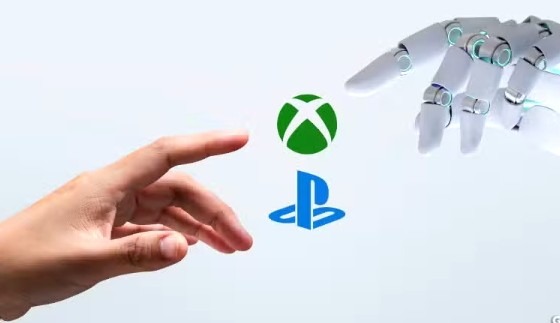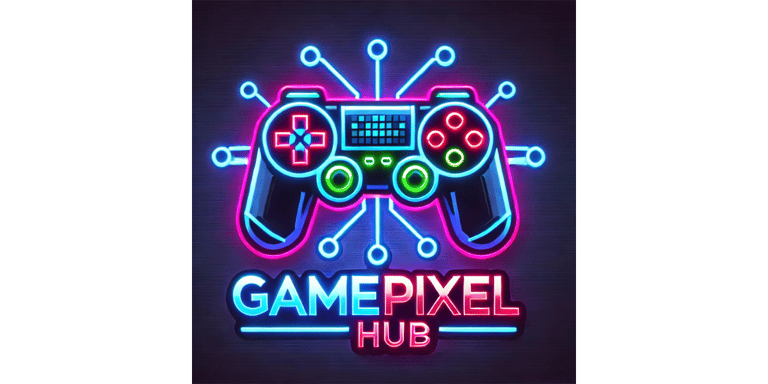How PlayStation And Xbox Are Using AI To Revolutionize Game Development
PlayStation and Xbox are investing in generative AI for game development. We break down their different strategies and how it will create more dynamic worlds. #AI #Gaming
10/19/20253 min read


🤖🎨The AI Game Dev Revolution: How PlayStation & Xbox Are Betting Big on Generative Tech 🚀🧠
The whispers in the industry have become a public declaration. Both Sony (PlayStation) and Microsoft (Xbox) are now openly investing in and integrating generative AI technologies into their game development pipelines and platform services. This isn't a distant sci-fi concept; it's the next arms race in the console wars, and it will fundamentally change how games are made, played, and experienced.
For experts like me who have seen tech cycles come and go, from motion controls to VR, the AI shift feels different. It's not a peripheral gimmick; it's a core processor-level evolution that touches every aspect of the medium. The announcements from Sony and Microsoft aren't just news—they're a line in the sand.This is your expert breakdown of what "generative AI in game development" actually means, the different paths Sony and Microsoft are taking, and what this brave new world will look like for developers and players.
By the Numbers: The Impetus for an AI Revolution 📊
The drive toward AI isn't born from a desire to replace humans; it's born from an economic and creative necessity.
· The average cost of developing a AAA game has ballooned to $200-$300 million, with development cycles stretching to 5-7 years.
· A single open-world game can require over 10,000 unique assets, from textures to 3D models to lines of dialogue.
· Player demand for bigger, more dynamic, and more personalized worlds is increasing exponentially.
Generative AI presents a solution to this "fidelity vs. feasibility" crisis. It's a force multiplier.
The Two Philosophies: PlayStation's "Controlled Canvas" vs. Xbox's "Democratized Toolkit" ⚖️
While both companies are embracing AI, their strategic approaches reveal their core philosophies.
Sony's PlayStation Approach: The "AI-Assisted Auteur"
Sony's first-party studios are known for their meticulously crafted, narrative-driven blockbusters. Their use of AI will likely be:
· Internal and Curated: Focused on empowering their existing world-class artists and designers, not replacing them.
· Asset Generation: Using AI to rapidly create photorealistic terrain, foliage, and architectural variations for their massive worlds, freeing up human artists to focus on key narrative and character assets.
· Procedural Narrative: AI that can generate dynamic side-quests and NPC dialogue that feels organic to the world, extending playtime without requiring thousands of manual work hours.
The Goal: To maintain their high-quality bar while increasing the scale and density of their worlds and making development more efficient.
Microsoft's Xbox Approach: The "Ecosystem Enabler"
Microsoft's strategy, tied to Azure and its vast cloud infrastructure, is broader and more platform-focused.
· Tools for Everyone: Integrating AI-powered tools directly into the game development kits (GDKs) available to all developers on their platform, from AAA studios to solo indies.
· Azure AI Services: Offering powerful cloud-based AI for voice synthesis, NPC behavior, and even playtesting analytics as a service.
· The "Copilot" Model: An AI assistant that can help with coding, debug scripts, and generate placeholder assets, dramatically lowering the barrier to entry for game creation.
The Goal: To fuel a content boom on Game Pass by making game development faster, cheaper, and more accessible to a wider range of creators.
The Player's Experience: A World Transformed 🎮
For you, the player, this evolution will be felt in tangible, incredible ways:
· Truly "Living" Worlds: NPCs with long-term memory and unique personalities, who remember your past interactions and whose lives continue when you're not around.
· Infinite Side Content: Dynamically generated quests and encounters that are unique to your playthrough, making no two players' experiences identical.
· Personalized Narratives: Stories that subtly adapt to your choices in real-time, creating a bespoke emotional journey.
· The End of "Copy-Pasted" Assets: Vast open worlds where every building interior, every patch of forest, and every mountain path feels uniquely hand-crafted, because an AI can generate infinite variations.
The Ethical Minefield: What Must Be Navigated 🚩
This future is not without its perils, and both companies are treading carefully.
· Copyright and Training Data: The legal and ethical questions around what data these AIs are trained on are far from settled.
· The "Soul" of a Game: Can an AI-assisted game retain the unique, human touch that defines our most beloved classics?
· Job Displacement: While the goal is augmentation, the industry is rightly concerned about the impact on entry-level and mid-tier artistic roles.
The Bottom Line: An Inevitable, Transformative Tide 🌊
The integration of generative AI into game development is no longer a question of "if," but "how and when." PlayStation and Xbox are not just adopting a new technology; they are betting their futures on it.
The next generation of consoles won't just be defined by teraflops and ray tracing, but by the intelligence of their silicon and the power of their cloud-based neural networks. The race to build the most dynamic, responsive, and breathtakingly vast worlds has begun, and AI is the engine.
Explore the latest news and guides for gamers.
© 2025. All rights reserved.
